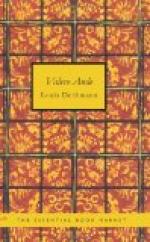Sixteen definite elements have been established—and a seventeenth will probably soon be added thereto—which, in their various combinations and aggregations, form the different tissues of which the organs in the human body are composed.
The prevalence of one or several of these elements in a certain tissue forms the main or governing feature of that tissue. Thus, the prevalence of potassium phosphate characterizes muscle tissue, the prevalence of ammonium phosphate (lecithin) nerve tissue. Each one of the various tissues consists of certain of these elements, and each tissue at every point where it occurs is affected by the lack of any of its elements.
One of the greatest physiological chemists, Justus von Liebig, maintains that, if one of the necessary elements in a chemical composition is missing, the rest cannot fulfill their duties and the respective cells must become diseased and degenerate.
This discovery, known as “the law of the minimum,” has thrown additional light upon the tasks before the new school of medicine.
Upon the basis of a careful diagnosis, the necessary nutritive salts or cell-foods, carefully compounded in accordance with the law of chemotaxis must be administered. This law discovered by Engelmann, requires that these cell-foods must be administered in digestible and assimilable forms so that the cells will be attracted by the chemical reaction, which may be of a positive or a negative character.
This being so, we can easily build up the tissues, by studying their chemical composition and supplying to the system that which is necessary, in the form of food. The cell will take care of the rest. Each tissue has its specific cell-system, and each cell will be attracted only by those ingredients which are needed for the mother tissue.
To bring to a tissue through the blood the lacking constituent element or elements is the only means of regenerating and healing diseased cells.
In this connection we are considering only constitutional diseases.
It has been shown that the lack of certain chemical elements from the blood signifies disease and that the variety of the disease depends on which of the elements are either lacking entirely or are present in incorrect proportion.
After this lack has been determined, the course to pursue in curing the disease is to supply the lacking chemical elements in the form of concentrated cell-food in addition to the regular food.
This method displaces entirely the old system of filling the body with poisonous drugs in order to counteract the effects of the disease. Such a system may suppress the symptoms by benumbing the nerves and preventing pain, it may counteract the natural process of healing of which inflammation, fever and pain, are the outward manifestations;—but it can never cure.
The discovery of dysaemia, or impaired blood supply, as the governing cause of disease, has destroyed another idol of modern fetish worship in medicine.




